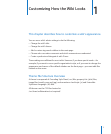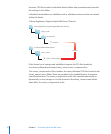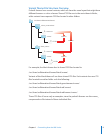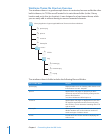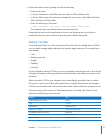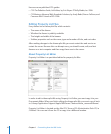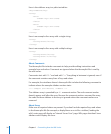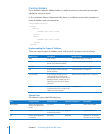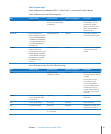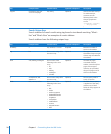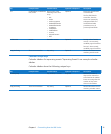
Chapter 1 Customizing How the Wiki Looks 15
Property List Editor doesn’t show comments, so if you want to see the example
sidebars provided in the wireframe’s theme.plist, you’ll need to open the
theme.plist le in a text editor and remove the comment markers surrounding
the example sidebars.
About Property List Files
The theme.plist le is structured like an XML le. If you understand XML, editing the
theme.plist is straightforward. If not, read the following sections for basic editing
information.
About Property List Keys and Values
Every setting controlled by the theme.plist le has a key, and an associated value or an
array (a collection) of associated values. To change the setting, you change the value or
values, not the key.
For example, to halve the height of the banner image in Property List Editor, double-
click the value 99 next to bannerImageHeight and replace it with 50.
To halve the height of the banner image in a text editor, change the following lines in
the theme.plist:
<key>bannerImageHeight</key>
<real>99</real>
to:
<key>bannerImageHeight</key>
<real>50</real>
About Strings
Most of the values in the theme.plist le are character sequences called strings.
About Dictionaries
A dictionary, or dict when viewed in a text editor, is an assortment of values of dierent
classes. In the theme.plist le, a sidebar is represented by a dictionary.
Because a dictionary can contain several values, Property List Editor provides a
disclosure triangle that allows you to view or hide the contents of the dictionary.
About Arrays
Arrays are collections or lists of similar classes. The theme.plist le includes two types
of arrays: a list of dictionaries and a list of strings.
The sidebars array is an example of a dictionary array. Because the sidebars array is
commented out by default, you won’t be able to see it in Property List Editor without
rst removing the comment markers in a text editor.
Because an array can contain several values, Property List Editor provides a disclosure
triangle that allows you to view or hide the contents of the array.



